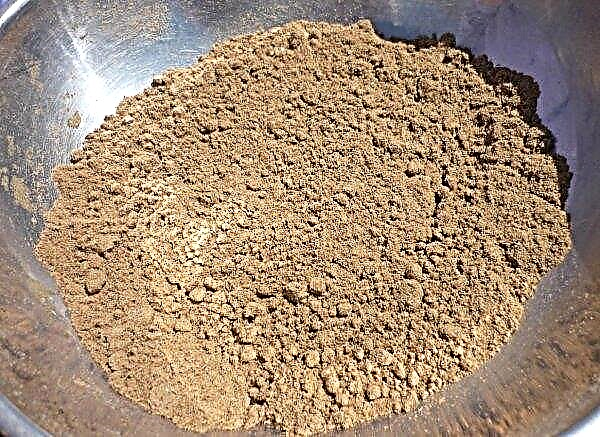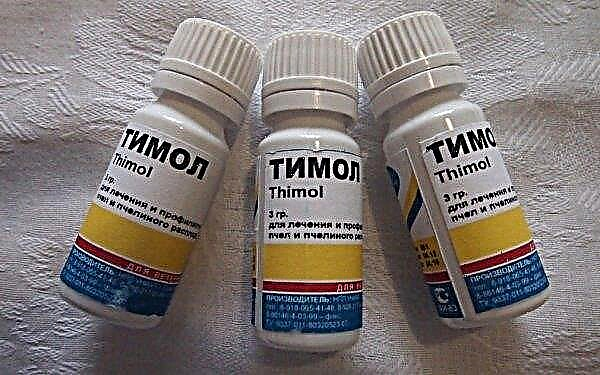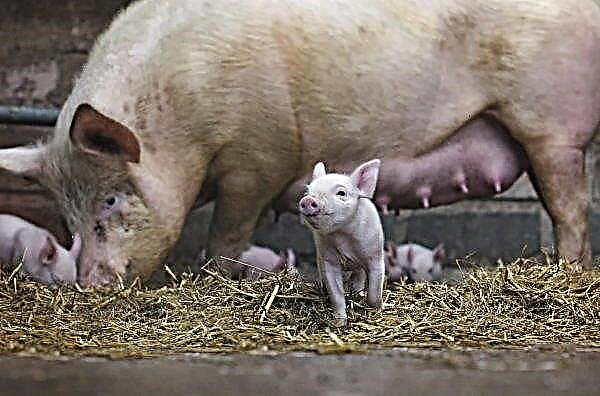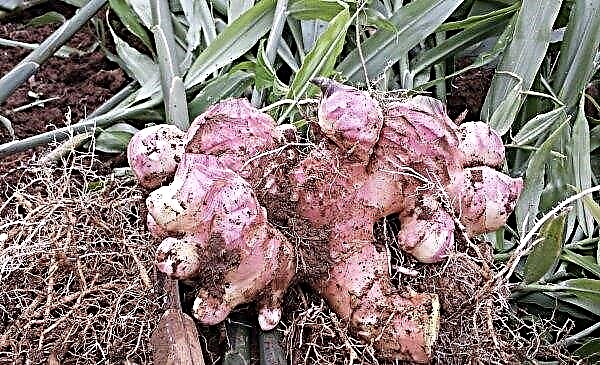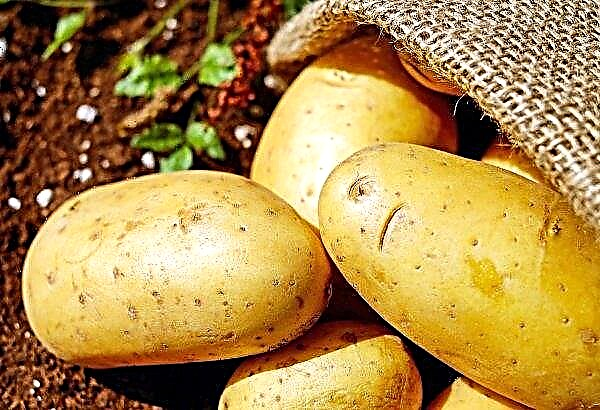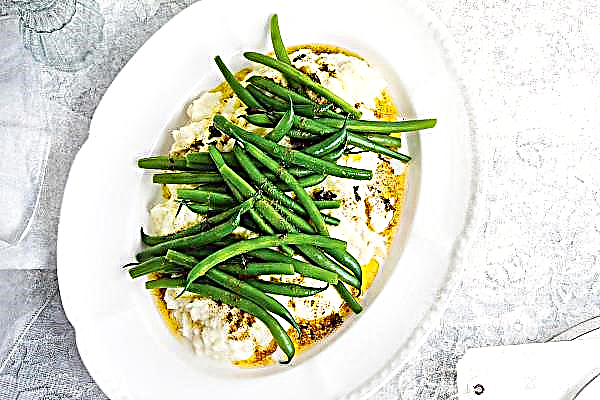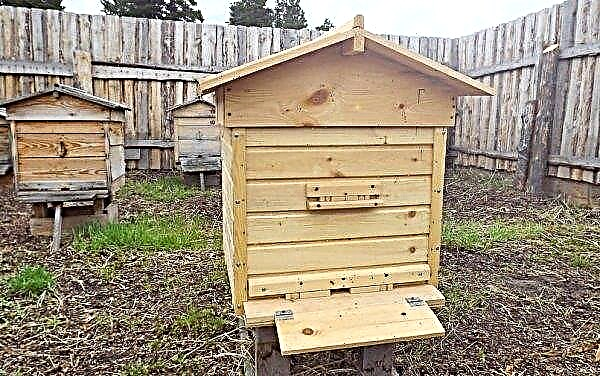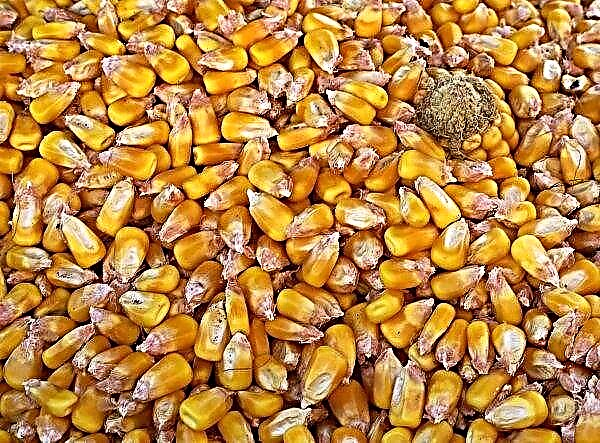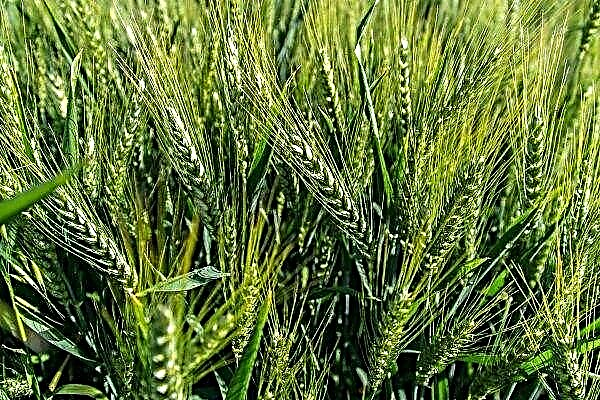Chinese Schisandra is a beautiful liana-shaped plant. Due to its unusual appearance, culture has gained popularity in almost all regions of Russia. Due to resistance to frost, this plant can be grown in the Urals. The article will consider the characteristics of the species, as well as the rules of planting and caring for the plant.
Botanical Description
Most often, Chinese schisandra in nature is found along rivers, on forest edges and on old glades. The plant has high frost resistance (up to -30 ° C), which makes it ideal for growing in harsh climatic conditions of Russia.
In the natural environment of growth, plants are tall, up to 12 m. The stems are thin. Their diameter reaches a maximum mark of 25 mm. Shoots - a brown shade. The bark is smooth, glossy, elastic. With age, it acquires a black-brown color and begins to peel off.
Did you know? In Chinese medicine, the plant is used to make infusions that are taken for headaches.
The leaves are dense, ovoid or broadly oval in shape, bordered by barely noticeable teeth. Leaf petioles can have a red or pink hue. The outer side of the leaves is characterized by a bright green color, and the back with a bluish-gray tone. In the fall, leaf blades may become yellow or pale golden.

If high humidity prevails in the region, then the leaves acquire saffron tones. Flowering is very memorable. Inflorescences resemble magnolia flowers. Petals have a rich white tint. Before falling, they turn light pink. Chinese magnolia vine begins to bloom in the middle or at the end of July.
Description of Schisandra fruits:
- the form - spherical;
- skin - bright red;
- berries form brushes of 15–20 pcs. in each.;
- fruit size - 8 cm;
- the scent - pleasant, citrus;
- inside the fetus contains 2-3 seeds.
The taste of the fruits is specific, because they contain a huge amount of healthy acids and oils. The peel is sweet-salty, and the juice is sour. The berries ripen in late August. The average yield is 5–7 kg per bush.
Important! Chinese magnolia vine is a monoecious plant. Therefore, high yields are observed if several seedlings of female and male plants are planted nearby.
Plant varieties
There are some of the most popular varieties of Chinese magnolia vine grown in the Ural climate:
- Firstborn. The height of the vine is about 2 m. Rounded berries are collected in brushes of 30-40 pcs. in each. Leaves are elliptical in shape, with sparse and sharp teeth. Flowering - bright pink inflorescences. It has high resistance to drought and frost.
- Schizandra. Vines of this variety can reach a length of 15 m. The root system is highly developed. The kidneys are small, dark brown in color. The stems are dense, 2 cm in diameter.
- Delight. The length of the vine is up to 15 m. The berries are sweet and sour, rounded. The average weight of each fruit is 5 g.

Landing
It is not recommended to grow vines with seeds, because their germination is not more than 50%. Therefore, it is preferable to use adult seedlings that are bought in nurseries or specialty stores. Some gardeners prefer to grow planting material on their own. All methods will be described in more detail below.
The timing
In the regions of Siberia and the Urals, they begin landing in the spring. This is due to the fact that plants need time to root before the onset of frost. If you are going to plant planting material in the southern regions of the country, then the procedure is started in the fall. The best time is mid-October. Soil temperature should be at least + 10 ° С.
Landing site preparation
The first thing to do before the landing procedure is to choose a suitable place. Chinese magnolia vine prefers to grow in well-lit areas. It can also be cultivated in partial shade of trees. Plants should be planted in places where there is no direct sunlight at noon - otherwise, after rainfall, burns will appear on the green mass, which will negatively affect the development of the culture.

If you plant a magnolia vine next to barriers or buildings, then the distance from the buildings should be at least 1.5 m, since the streams of water that will drain from the roof can adversely affect the plant. The optimal "step" between plants is 1 m. If you reduce the distance, they will be intertwined with each other, shoots are deformed.
Before planting, in 1-2 weeks, fertilize the site with humus, peat or compost. You can also mix all of these ingredients in equal proportions and add 20 kg of the mixture per 1 m². After this, the site is dug up to the depth of the bayonet of the shovel and left for some time so that the substances nourish the soil.
Seedlings preparation
When choosing planting material, take into account the following characteristics:
- developed and healthy root system (without mold and cracks);
- optimal age is 2 years. Such a seedling is able to easily survive frosts;
- the presence of an earthen coma on the root system;
- lack of signs of disease (spots, plaque).
 Preparation of planting material for lemongrass is that the rhizome is soaked for 2 days in a clay mash.
Preparation of planting material for lemongrass is that the rhizome is soaked for 2 days in a clay mash.
After that, you can use the growth stimulator "Kornevin" (30 g per 5 liters of water). Soak seedlings in such a preparation for at least 3 days. Thanks to such actions, planting material will quickly harden in the soil and will be more resistant to frost.
Did you know? The first scientific description of Chinese magnolia vine appeared in 1837. It was represented by the Russian taxonomist. S. Turchaninov.
Landing rules
Landing technology is as follows:
- Dig holes 40 cm deep and 50 cm wide.
- Pour a 15-cm layer of drainage into the bottom. It is advisable to use pebbles or gravel.
- Pour the nutrient mixture of peat, garden soil, humus and compost (in a ratio of 1: 2: 1: 1) over the drainage layer.
- Place a seedling inside the groove and flatten the roots.
- Sprinkle with soil remaining after digging in the hole.
- Pour 10 liters of water.
- Cover the area around the seedling with a layer (20 cm) of mulch - humus and straw.

Chinese Schisandra Care
The procedure for caring for plants is quite simple, that is, they are unpretentious in care. Despite this, each gardener must adhere to the basic rules of fertilizing and watering. An equally important stage is preparation for winter. Do not forget about removing weeds and loosening the topsoil. If you properly care for the culture, then you can permanently preserve the exquisite appearance of lemongrass and its productivity.
Watering and feeding
Chinese magnolia vine responds positively to well-moistened soils. Watering should be carried out at the rate of 60 liters per plant. You need to irrigate the crop no more than once a week. If you will irrigate under the root, then it is better to do this with standing water. You can irrigate the soil at any time of the day.
Important! Watering the bushes is preferably by sprinkling. The procedure should be carried out in the evening, so that active sunlight does not provoke burns.
Top dressing produce:
- 3 years after planting, in the spring, saltpeter is added (30 g to each bush);
- in summer, chicken droppings diluted with water in a ratio of 1:20 are used. Feeding is carried out three times with an interval of 21 days. Under one lemongrass pour 10 liters of solution;
- in the fall, after the leaves fall, superphosphate (50 g per 1 plant) or wood ash (30 g per bush) is added.

A separate procedure for feeding adult fruiting plants is also distinguished. In the spring, nitroammophosco (40 g per 1 m²) is used. At the end of August, potassium nitrate (100 g per 1 bush) is used. In autumn, fertilizers are applied in the form of superphosphate (50 g per bush).
Pruning
For the first time, you need to trim the Chinese magnolia vine 2 years after planting. No more than 5 young shoots are left on the bushes, and the rest are cut off at ground level. Try to prune in the fall when there are no leaves on the bushes. In spring, root growth is removed. Also at this time, sanitary pruning is carried out. In the process, sick, dry and frost-affected branches are cut.

Winter preparations
Chinese magnolia vine, in spite of severe frost resistance, needs shelter for the winter. Young plants that have not yet had time to grow stronger are covered with spruce branches or fallen leaves. This will not only protect the root system from severe cooling, but also maintain the optimal level of moisture in the soil. Adult plants do not need additional shelter for the winter. Their winter hardiness allows you to grow in the Urals. However, a low layer of mulch in the near-trunk zone is welcome.
Reproduction methods
There are several ways to propagate Chinese magnolia vine. Plant growers in their practice use different methods, depending on their own preferences, but all methods are very effective. Therefore, fruiting may occur already in the third year after planting.

Seeds
Lemongrass seeds are extracted from ripe berries. They need to be stratified, that is, stored in sand at a cool temperature. The first 2 weeks of seed should be stored at + 18 ° C. After that, you need to lower the indicators to + 8 ° C, and after a week - to + 5 ° C.
Sowing is carried out in mid-autumn, in small containers or in a greenhouse. Planting holes should be shallow, only 5-7 cm. When three leaf plates appear on plants, seedlings dive. Transplantation to a permanent place is carried out after 2 years.

Cuttings
Propagation by cuttings is carried out in the fall and is as follows:
- Cut small shoots from an adult bush, 8-10 cm long. Their age should be 2-3 years.
- Place the branches in the Epina solution (30 g per 5 liters of water) for a week.
- Plant in a greenhouse to a depth of 6 cm on the seventh day after soaking.
- Water the seedlings daily, regularly remove weeds.
- When 2 pairs of leaves form, proceed to transplant to a permanent place.

Sprout
The process of growing undergrowth is simple, so beginner gardeners often resort to it. The procedure is started in the fall, when the leaves fall. Trim the shoot that develops next to the rhizome. Soak it in the Kornevina solution (50 g per 5 liters of water) for three days, then plant it in open ground.

Diseases and Pests
Chinese lemongrass may be affected fusarium wilting, powdery mildew and black spotting. Symptoms of fusarium wilting are yellowing and drying of the leaves, as well as deformation of the vine. The treatment consists in processing the solution "Fitosporina" (20 g per 5 liters of water).
In the fight against powdery mildew, which manifests itself in a gray coating not on the surface of shoots and dark spots on the fruits, use Bordeaux liquid (20 g per 10 liters of water). An effective remedy against black spotting (dark brown spots on the fruit, as well as dry leaves) is considered soda ash (5 g per 10 l of water). Spraying is carried out twice a month.

This culture is also affected by some pests:
- aphids. Processing is carried out 3 times a month with a solution of formalin (30 g per 10 l of water);
- spider mite. The bushes are sprayed with a solution of "Kuprozan" (4 g per 10 liters of water).
So, now you know how to grow a beautiful and fragrant Chinese magnolia vine. Liana is unpretentious in leaving, but all your efforts will pay off in 3 years after planting. This plant will delight you not only with the beauty of delicate flowers, but also with delicious berries, which are very beneficial for the health of all family members.

